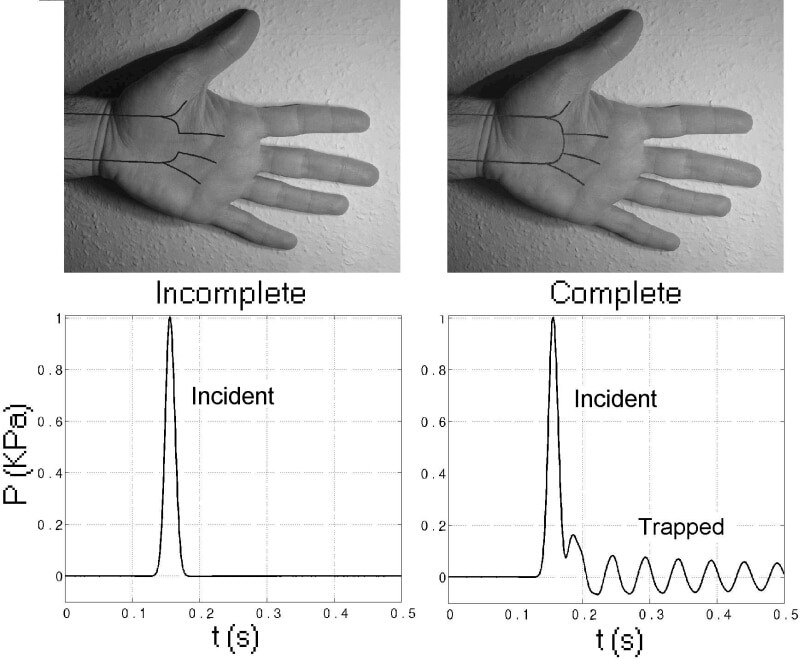Although the topology of the human arterial system is mainly a binary tree structure, some parts are more complex. In the hands and feet the palmar and plantar arches give rise to loops. In the head, the circle of Willis gives rise to an even more complex network of arteries. Another remarkable characteristic of the arterial system is its anatomical variation. This study is a numerical simulation of the main arteries of the human arm: brachial, ulnar, radial, palmar arch and digitals. It analyses the two topologically different networks observed after the bifurcation from the brachial artery: (a) an incomplete palmar arch and (b) a complete palmar arch. Figure 1 shows, schematically, these two possibilities. The objective is to determine if the topology of the palmar arch has a profound enough effect on flow pattern to be distinguished from pressure or flow measurements. This information may be useful in the treatment of renal patients undergoing dialysis through the arm arterial network, since blood supply may be compromised in some areas of the hand if the palmar arch is incomplete. It may also be useful to assess whether the radial artery can be harvested for use in bypass operations. The simulation is carried out by solving the hyperbolic system of equations formed by the non-linear inviscid one-dimensional blood flow equations in compliant vessels. We separate forward and backward contributions to blood pressure and flow measured at a point by means of the method of characteristics (Parker, 1990). The system of equations is solved numerically using the discontinuous Galerkin formulation of Sherwin (2003). When a Gaussian pressure test wave is applied at the inlet of the brachial vessel in a system with well-matched bifurcations for forward travelling waves and absorbent terminal resistances, the pressure history in the middle point of the radial artery shows the input wave with a time delay. If the palmar arch is incomplete, no further waves are observed (Fig. 1, left) and the pressure measured fully consists of forward contributions. In contrast, a set of waves is detected when we complete the palmar arch (Fig. 1, right). They are trapped waves travelling around the loop formed by the ulnar, radial and palmar arch arteries. Similar results are obtained in the ulnar artery. We conclude that a complete palmar arch produces trapped waves that increase blood pressure and blood flow reflections at the radial artery compared with a hand with an incomplete palmar arch.
University of Oxford (2004) J Physiol 561P, PC18
Communications: WAVE ANALYSIS OF FLOW IN THE PALMAR ARCH
Alastruey,Jordi ; Parker,Kim H.; Peir├│,Joaquim ; Sherwin,Spencer J.;
1. Imperial College, London, United Kingdom.
View other abstracts by:
Where applicable, experiments conform with Society ethical requirements.

